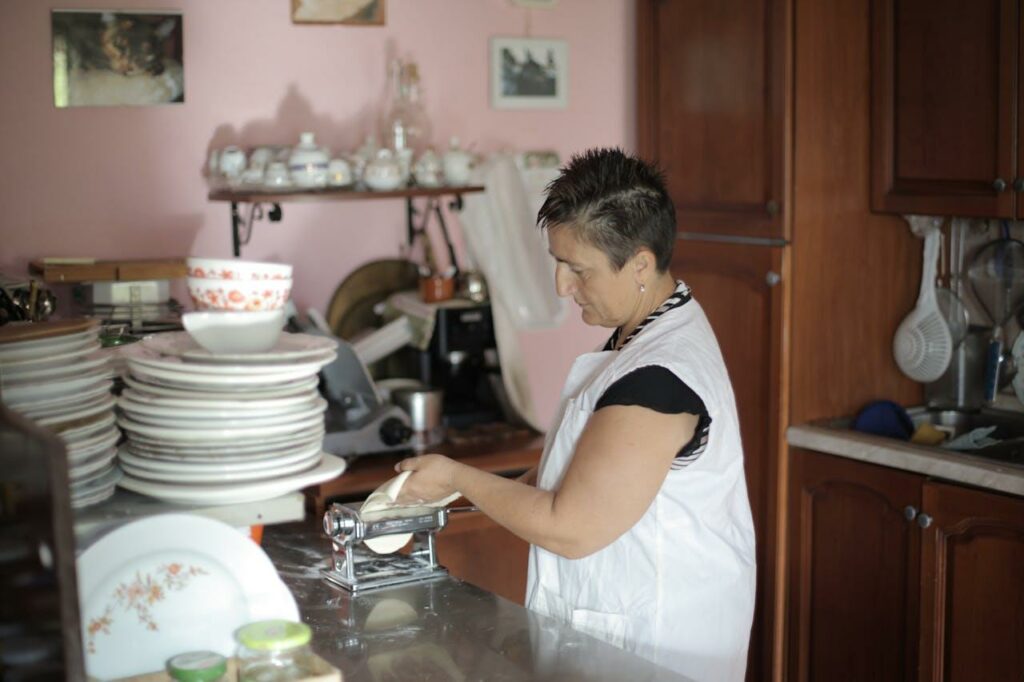A cluttered kitchen can often feel like a battleground, where finding the right utensil or ingredient becomes a daunting challenge. But fear not, for there’s a simple solution: effectively organize your kitchen cabinets and drawers. In this quick guide, we’ll explore the art of transforming chaotic kitchen spaces into havens of efficiency and orderliness. Join us on this journey as we unlock the secrets to creating a well-organized kitchen that not only enhances functionality but also brings joy to your culinary adventures.
Table of Contents
What Is a Kitchen to You?
At the heart of any home, the kitchen serves as a bustling hub where meals are prepared, memories are made, and conversations flow freely. Yet, amidst the hustle and bustle of daily life, our kitchen cabinets and drawers often bear the brunt of disorganization and clutter. Items accumulate over time, hiding in the depths of cabinets or scattered across countertops, making it a challenge to locate essentials when needed. Nevertheless, you can reclaim control over your kitchen space by implementing effective organization techniques. From decluttering to maximizing storage efficiency, each step towards a well-organized kitchen brings us closer to a harmonious and functional culinary environment.
Making Food in a Clean Space
Cooking is not just a daily chore; it’s an art form that allows us to express creativity, nourish our bodies, and connect with loved ones. However, the cooking process is greatly enhanced when carried out in a clean and organized kitchen. A clutter-free workspace streamlines meal preparation and fosters a sense of calm and focus. When every tool and ingredient has its designated place, the cooking experience becomes more efficient and enjoyable. Moreover, maintaining a clean kitchen is not just about aesthetics but prioritizing hygiene and food safety. A tidy kitchen reduces the risk of cross-contamination and foodborne illnesses, ensuring that the meals we prepare are delicious and safe for consumption. In essence, a clean and organized kitchen is the foundation upon which memorable meals are created and cherished moments are shared.

Assessing Your Kitchen Space: Organize Your Kitchen Cabinets and Drawers
When embarking on the journey to organize your kitchen cabinets and drawers, the first step is to assess the current state of your culinary space. This evaluation allows you to gain a clear understanding of the areas that require attention and the extent of clutter that needs to be addressed.
Evaluate the Current State of Your Cabinets and Drawers
Begin by taking stock out of each cabinet and pantry. Pay attention to items that are rarely or too much used, duplicates, or no longer serve a purpose. Assess the organization of each space, noting any areas that feel overcrowded or disorganized. Take inventory of your cookware, utensils, gadgets, and pantry items, noting any expired or unused products. This initial assessment provides valuable insights into the specific challenges you’ll need to tackle during the organization process, guiding your approach to creating a more functional and efficient kitchen layout. With emptied stock, you can start looking for inspiration to style kitchen cabinets. Let’s be honest: that is the fun part of reorganizing or remodeling space.
Plan Your Organization Strategy
When it comes to transforming your kitchen into a well-organized oasis, a thoughtful strategy is key. And the basis of that strategy is decluttering. However, diving headfirst into decluttering can feel overwhelming. So that’s why it’s not a bad idea to do a bit of research into how to declutter your kitchen step by step. If you have a massive kitchen space and even bigger storage space, consider hiring professionals to aid you with the organization. Ease the whole organizing process for yourself by hiring extra hands.
Now, let’s emphasize the importance of taking a strategic approach. Think of organizing your kitchen as an investment in your daily life—it’s about setting yourself up for success and making your culinary space work for you. Dedicating some time upfront to planning will save you countless headaches and frustrations down the road. Accessibility and frequency of use are two factors that should heavily influence your organization’s strategy. Imagine cooking your favorite meal—wouldn’t it be a breeze if all your essential tools and ingredients were within arm’s reach? That’s the power of strategically arranging your kitchen items. Consider your own cooking habits and routines as you plan. Do you find yourself reaching for certain spices or utensils more often than others? Are there specific areas of your kitchen that could benefit from better organization?
Tailoring your strategy to fit your unique needs and lifestyle ensures that your kitchen layout works harmoniously with the way you cook and navigate your space. Another crucial aspect to consider in your strategy is your budget. Renovations and reorganizations don’t need to be a heavy strain on your finances. Discover and research some ideas to upgrade your kitchen on a budget.
How to Maximize Space with Smart Storage Solutions
Revolutionize your kitchen storage with savvy solutions designed to make the most of every inch. Here’s how:
- Invest in Space-Saving Solutions. Say goodbye to wasted space and hello to efficient organization. Stackable shelves, drawer dividers, and cabinet organizers are your new best friends, maximizing storage capacity and keeping everything neatly in place.
- Utilize Vertical Space. Don’t let valuable vertical space go to waste. You can put up some hooks or racks on cabinet doors as a way to hang pots, pans, and kitchen tools. This will immensely help you free up precious cabinet and countertop space while keeping your essentials within easy reach.
- Optimize Pantry Storage. Learn how to create more storage in your pantry. Transform your pantry into a clutter-free zone with the help of clear bins or baskets. Group similar items together to prevent chaos and streamline meal prep, ensuring that everything is visible and easily accessible when you need it most.
- Make Use of Unused Wall Space. Turn blank walls into functional storage areas with floating shelves or a pegboard. Showcase your cookware collection or store frequently used utensils within arm’s reach, adding both style and functionality to your kitchen decor.
Tips for Navigating and Upkeeping The New Organized Kitchen
- Label Everything. Use labels to clearly mark containers, jars, and bins in your pantry and cabinets. This makes it easier to identify ingredients and prevents confusion when cooking or baking.
- Implement a Meal Planning System. Plan your meals for the week ahead and create a shopping list based on your planned recipes. This helps prevent food waste and ensures you have all the ingredients you need on hand.
- Rotate Pantry Items. Regularly check expiration dates on pantry items and rotate older items to the front to ensure they’re used before they expire. This prevents food from going to waste and frees up space in your pantry.
- Use Drawer Liners. Line your drawers with non-slip liners to prevent items from sliding around and getting disorganized. This also makes it easier to clean up spills and crumbs.
- Create a Command Center. Designate a central area in your kitchen for important items such as keys, mail, and calendars. This helps keep clutter off countertops and ensures everyone knows where to find important items.
- Practice the One-In, One-Out Rule. Whenever you bring a new item into your kitchen, such as a gadget or appliance, consider donating or discarding an older item to prevent clutter from accumulating.
- Schedule Regular Maintenance. Schedule regular maintenance tasks for your kitchen appliances, such as cleaning filters and checking for leaks in your dishwasher or refrigerator. This helps prevent costly repairs and ensures your appliances remain in top condition.
- Involve the Whole Family. Encourage family members to pitch in with kitchen organization and cleaning tasks. Assign age-appropriate chores to children and make it a team effort to maintain a clean and organized space.
Sustaining a Clutter-Free Countertop
Maintaining a clutter-free countertop is essential for a functional and visually pleasing kitchen. To start, store small appliances, utensils, and cooking tools in cabinets or drawers when they’re not in use. This simple habit instantly frees up valuable space and prevents countertops from becoming overrun with unnecessary items. Additionally, consider investing in multi-functional kitchen gadgets or appliances. These versatile tools help minimize countertop clutter and enhance efficiency by performing multiple tasks in one. Incorporating these strategies into your daily routine will create a streamlined and inviting kitchen environment where cooking and meal preparation are a breeze.

Keeping the space clean and tidy is just as important as organization!
How to Maintain a Clean Kitchen Space
Maintaining a clean kitchen requires consistent effort and proactive cleaning habits. Start by cleaning as you cook, tackling dishes, utensils, and spills while preparing meals to prevent a buildup of mess. After each cooking session, take a few minutes to wipe down countertops, stove surfaces, and appliances with a damp cloth or disinfectant wipes to remove any splatters or food debris.
Don’t forget about the floors—sweep or vacuum daily to clear away crumbs and spills, and mop as needed to keep them clean and stain-free. Be diligent about emptying the trash regularly to prevent odors and discourage pests from lingering around. Deep clean your kitchen appliances periodically to maintain their performance and longevity. This includes cleaning the oven, microwave, refrigerator, and dishwasher according to the manufacturer’s instructions.
Lastly, ensure proper ventilation by using exhaust fans or opening windows to vent steam, odors, and smoke while cooking. This helps prevent lingering smells and moisture buildup, keeping your kitchen fresh and inviting. By incorporating these proactive cleaning habits into your routine, you can enjoy a clean and tidy kitchen environment, no matter how often you cook.

Photo by Pexels.com
Conclusion on How To Organize Your Kitchen Cabinets and Drawers
As you embark on the journey to organize your kitchen cabinets and drawers, it’s important to recognize the transformative power of this endeavor. Beyond simply tidying up your space, organizing your kitchen can profoundly impact your daily life, making meal preparation more efficient, reducing stress, and enhancing your overall well-being. Invest time and effort into thoughtful planning and strategic implementation. You’ll not only create a functional and visually appealing kitchen but also cultivate a sense of harmony and balance in your home. Remember, the key is approaching the process with patience, creativity, and a willingness to adapt. With each step forward, you’re not just organizing your kitchen – creating a sanctuary where culinary creativity flourishes and cherished memories are made. So, embrace the journey, celebrate your progress, and savor the satisfaction of a well-organized kitchen that truly reflects your unique lifestyle and preferences. Happy organizing!
